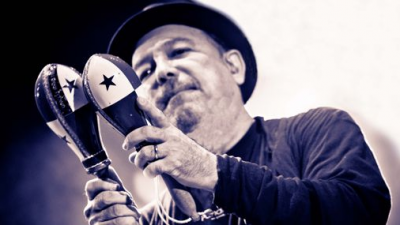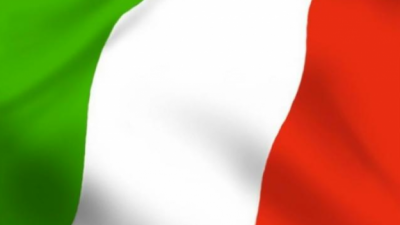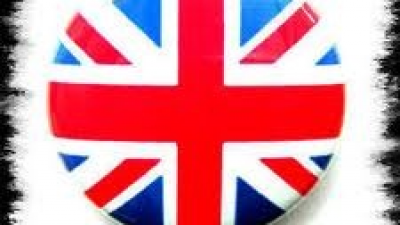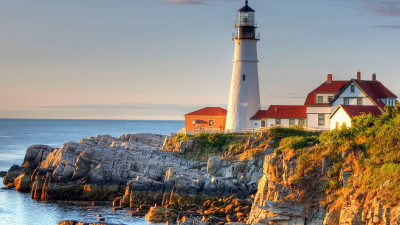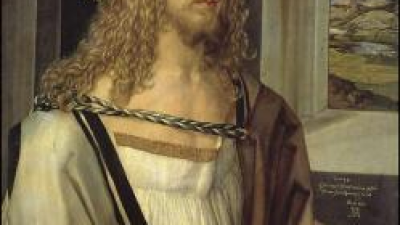The most legendary ships of all time
|
NEWS
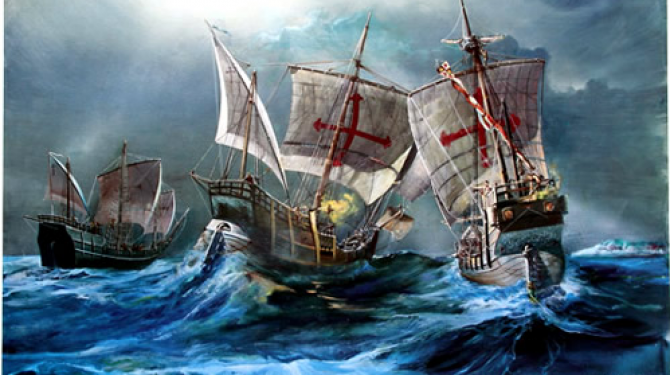
Source: listas.20minutos.es
TOP 31:
HMS Birkenhead
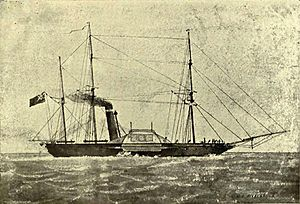
It was one of the first iron hull ships built for the Royal Navy, designed as a frigate, it was used for troop transport. On February 26, 1852, while transporting troops to Algoa Bay, he was shipwrecked at Danger Point near Gansbaai 140 kilometers from Cape Town. There were not enough lifeboats for all passengers, and the soldiers stood firm, allowing the women and children on board to leave first. Only 193 of the 643 people on board survived, and the soldiers first introduced the "women and children first" as a protocol to leave the ship. Kipling made a famous poem describing the soldiers' courage in such desperate circumstances.
TOP 30:
Frigate The Jellyfish
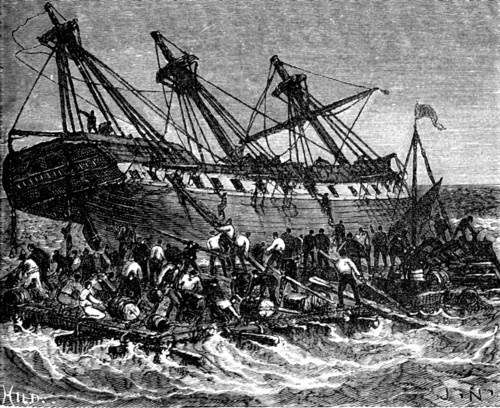
The wreck of the Medusa frigate off the coast of West Africa in the summer of 1816 was the most documented and controversial sinking in history before the wreck of the Titanic took place. In the annals of the French navy there is no more tragic example than that of that frigate. By the cowardice of its captain, Hugues Du Roy de Chaumereys, 147 people were abandoned to their fate, without food and with hardly any water, arriving to practice cannibalism to survive. And that motivated a great scandal at the time. But France in 1980, recovered this story that was untold. The French archaeological service sent an expedition led by Jean-Yves Blot (who would later write his "La Medusa; chronicle of an ordinary shipwreck"). And he located the wreckage of the ship and a fundamental history for France could be recovered.
TOP 29:
USS Indianapolis
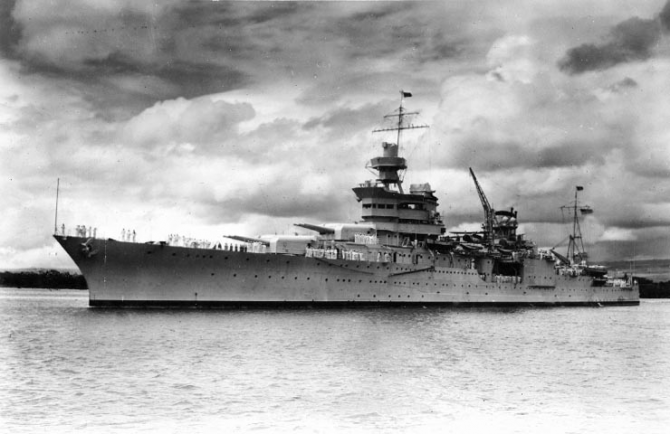
It was a Portland-class heavy cruiser belonging to the United States Navy, with numeral identifier CA-35, the sailors called him colloquially Indy. It was the flagship of Admiral Raymond Spruance from 1943 to 1944, but it is famous because it was the ship that transported material from the first atomic bomb from Hiroshima from mainland America. His sad fame is due to his link with the Manhattan Project and the tragic end of many of his shipwrecked drifters, forgotten by the US Navy, without drinking water, attacked and eaten by sharks.
TOP 28:
Ariel
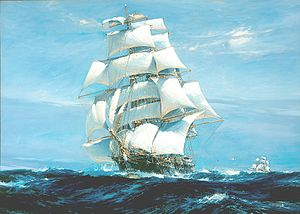
Winner of the famous 1866 Tea Race between China and London. After 99 days and 26,000 km of sea crossing, three ships arrived at the Thames Estuary at the same time, side by side, in an unprecedented event in naval history. The news spread throughout England, so they came from everywhere to witness the event, including the royal family. In the final effort, the captain of the Ariel ordered to move the load towards the bow, trusting in the unique frontal strength that the ship owned. The maneuver was a success, since the ship rose from the bow and managed to get more out of the wind. At 9:15 in the morning, among the delirium of the crowd, a cannon canker announces that Ariel has crossed the finish line and takes moorings on Pier 9, just 20 minutes ahead of his rivals Taeping and Serica. However, the authorities agree on a triple tie, the only case in the history of a naval competition, although the main prize for arriving first corresponded to Ariel. The Great Race of 1866 is considered legendary in naval history
TOP 27:
Kon-tiki
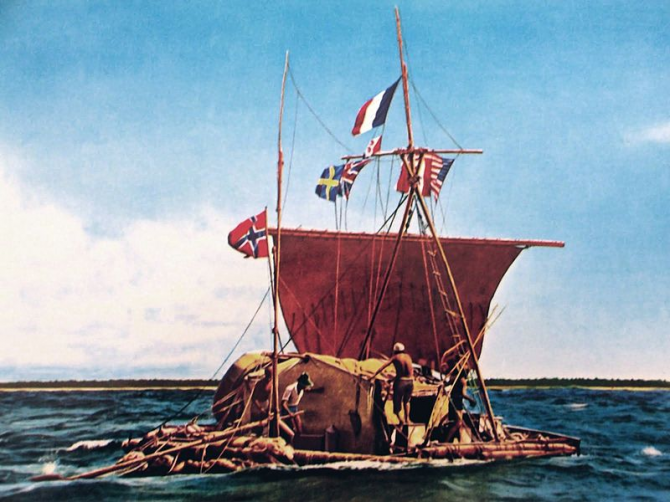
Kon-tiki was the name of the raft used by Norwegian explorer Thor Heyerdahl (1914-2002), on his 1947 expedition through the Pacific Ocean from South America to Polynesia. The name of the boat was due to the solar god of the Incas, Wiracocha, who was said to have formerly been named "Kon-Tiki." Kon-Tiki is also the name of the book Heyerdahl wrote about his experience. Heyerdahl argued that residents from South America could have reached Polynesia already in pre-Columbian times. Heyerdahl's purpose was to demonstrate the possibility that the settlement of Polynesia had been carried out by sea, from South America, in rafts identical to that used during the expedition and moved only by tides, currents and force of the wind, which is almost constant, in an east-west direction, along Ecuador. However, the expedition had certain elements such as a radio, clocks, maps, sextants and knives, although they were not relevant when proving that a raft like the one used could make the crossing. The Kon-Tiki expedition was financed through loans, and was donated by the United States Army. Heyerdahl traveled to Peru some time before where, together with a small group of people and within the space provided by the national authorities, he dedicated himself to the construction of the raft. For this, logs of balsa wood and other native materials were used, and the indigenous construction style was maintained as observed in the illustrations left by the Spanish conquerors. The journey began on April 28, 1947. Heyerdahl and five other members traveled for 101 days along almost 7,000 km along the Pacific Ocean, until they reached a reef in the Raroia Atoll, on the Tuamotu Islands, on the 7th of August 1947. The entire crew arrived on land safe and sound. The book Kon-Tiki, which Heyerdahl wrote describing the adventures of the expedition, was a best-seller and was translated into 66 languages, and the film that was filmed won an Oscar for best documentary in 1951.
TOP 26:
ARA General Belgrano
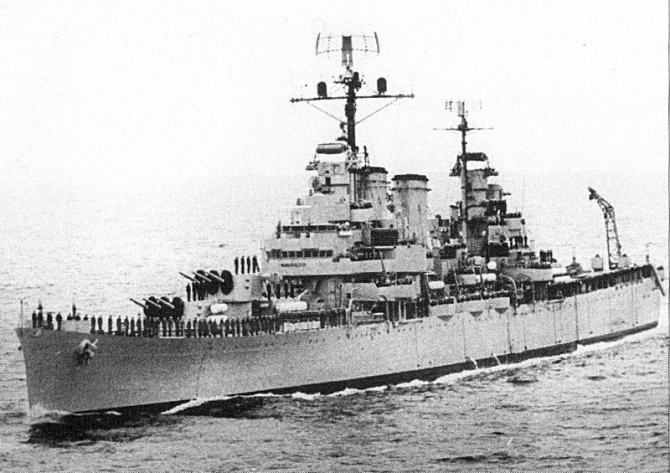
It was a sunken Argentine Navy cruise with significant human losses in an attack during the Falklands War. The collapse of the ARA General Belgrano occurred on Sunday, May 2, 1982, during the Falklands War, as a result of the attack by the British nuclear submarine HMS Conqueror. The sinking of the Argentine cruise allowed the British naval superiority in the area. The attack caused the death of 323 Argentines — almost half of the country's casualties throughout the conflict. ”The incident generated a controversy in both countries, having occurred outside the exclusion area established by the British government around the islands. . It is the only case of a ship sunk in war by a nuclear submarine.
TOP 25:
SS France
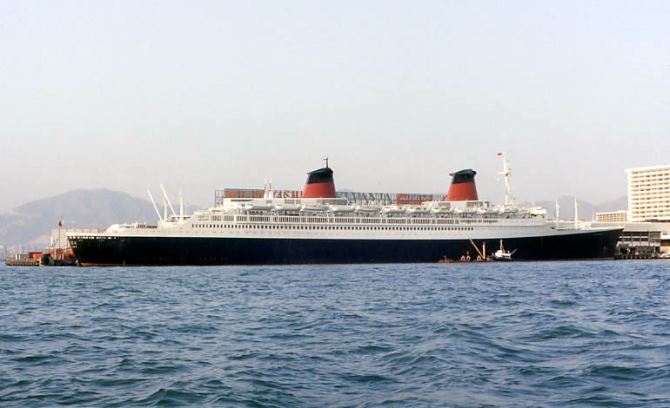
The SS France was a transatlantic of the Compagnie Générale Transatlantique (CGT, also known as French Line) built by the French shipyard Chantiers de l'Atlantique, in Saint-Nazaire, France, and put into service in February 1962. At the time of its construction, in 1960, was the largest passenger ship ever built. The tonnage of France was a record surpassed by the MS Sovereign of the Seas in 1990. Its 316 meters long, were not surpassed until the construction of the RMS Queen Mary 2 in 2004, 345 meters. France was then acquired by the Norwegian Cruise Line (NCL), in 1979, renamed it as SS Norway and subjected to major modifications to better fulfill its work in that company as a cruise. It was sold for scrapping in 2006, which was completed towards the end of 2008.
TOP 24:
Flying cloud
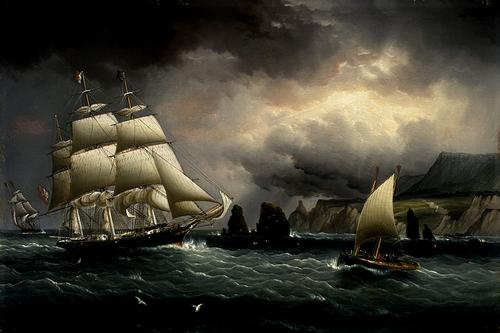
He was a clipper who set the sailing record between New York and San Francisco, traveling in 89 days 8 hours. He kept this record over 100 years, from 1854 to 1989
TOP 23:
The Constitution
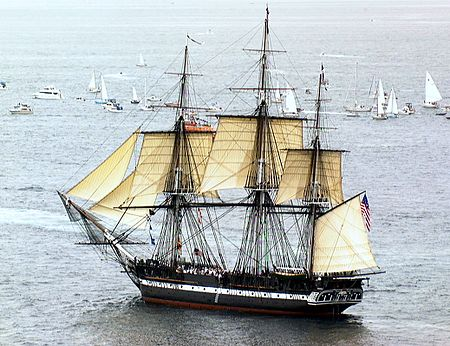
The USS Constitution is one of the first frigates of the United States Navy that was launched in 1797; It was named after President George Washington who named it in this way in honor of the Constitution of the United States of America. Built with the wooden hull and a rig with three masts is to date, the oldest ship that is still active and afloat throughout the world 2 The USS Constitution is one of the first six frigates of the United States Navy United, built thanks to the Naval Law of 1794. These frigates were designed by Joshua Humphreys who designed them to be the main ships of the young Navy of the United States. For this reason, the Constitution and the others were designed and built larger, stronger and better armed than the rest of the frigates of the time.
TOP 22:
SS United States
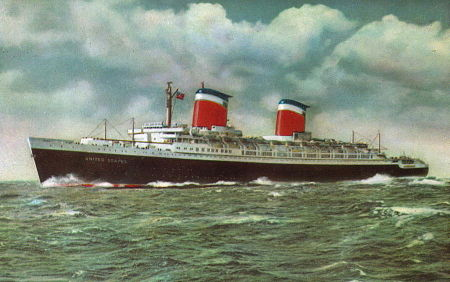
He was an American ocean liner considered at the time as one of the most modern and fastest. Built at a cost of 78 million dollars, it reached a cruise speed exceeding 35 knots kept secret (approximately 65 km / h) and a maximum of 38 knots (70 km / h) which allowed him to win on his trip The Blue Band was inaugurated in both directions when crossing the Atlantic in just 3 days and 10 hours in 1952 at an average of 35 knots, a record that remained in its possession until 1990. With a length of 301 m, it was one of the largest ships of the 1950s and 1960s (before the arrival of the SS France).
TOP 21:
Golden Hind (Sir Francis Drake)
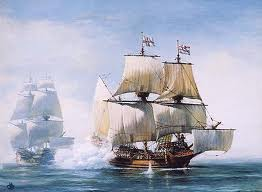
The Golden Hind (golden doe) was an English galleon best known for its circumnavigation of the globe between 1577 and 1580, led by the corsair Sir Francis Drake. Its original name was Pelican, being renamed in the middle of the trip in 1577, when it was preparing to enter the Strait of Magellan. He re-baptized his ship as a political gesture, rejoicing with his patron, Sir Christopher Hatton, whose crest had a golden doe.
TOP 20:
Admiral Graf Spee
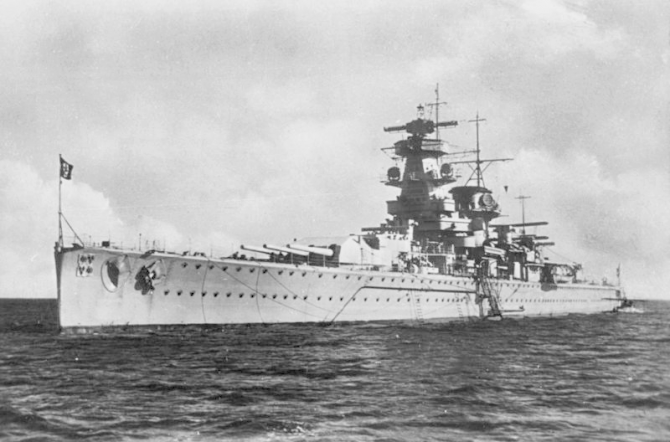
it was a heavy cruiser of the Deutschland class - also called "pocket battleship" - that served with the Kriegsmarine of Nazi Germany during World War II. The cruise conducted five non-intervention patrols during the Spanish Civil War between 1936 and 1938, and participated in the coronation of King George VI of the United Kingdom in May 1937. Admiral Graf Spee was sent to the South Atlantic in the previous weeks at the outbreak of World War II to be able to intercept the lines of merchant ships when the conflict broke out. As of September 1939 and in two and a half months, the German privateer sank nine ships totaling 50,089 tons of tonnage, but on December 13 he had to face three British cruisers in the battle of the Rio de la Plata. Admiral Graf Spee caused serious damage to British ships, but the damage he suffered forced him to stop at the port of Montevideo. Convinced by false reports about the approach to his ship of numerous British forces, the commander of the cruise ship, Hans Langsdorff, ordered him to plunge it on December 17, 1939. The cruise was partially scrapped in situ, although part of the ship remains visible today on The surface of the water.
TOP 19:
The Gokstad Ship
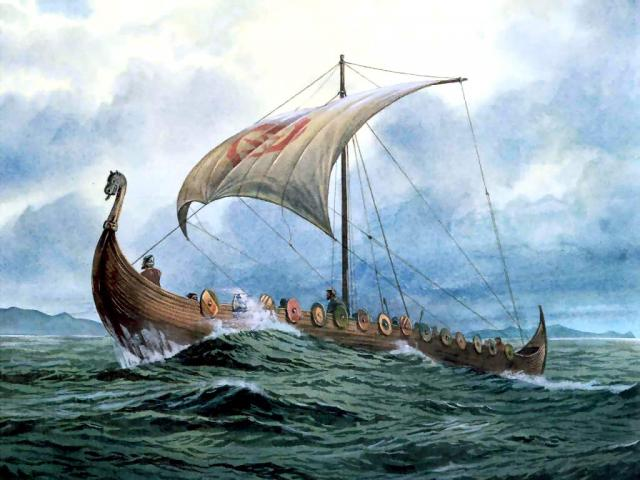
The Gokstad Ship is a Viking ship from the end of the 9th century found in a funerary ship under a burial mound at the Gokstad farm in Sandar, Sandefjord, Vestfold, Norway. The ship was excavated in 1880 by Nicolay Nicolaysen. Gokstad's ship consists of nailed boards, almost all of them in oak. It is 24 meters long and 5 meters wide. This is the widest ship of all exhibited in the Viking Ship Museum in Oslo. The ship was made to be propelled by 32 rowers, and the holes that served for the passage of the oars could be covered at the time of sailing. It used a sail of an approximate surface of 110 m² that, according to estimates, could make the boat go at a speed of 12 knots. When it was in shallow water, the rudder could be lifted, so as not to suffer damage. The dendrochronology analysis suggests that the Gokstad ship was built from logs cut down around the year 890.
TOP 18:
Mary Rose
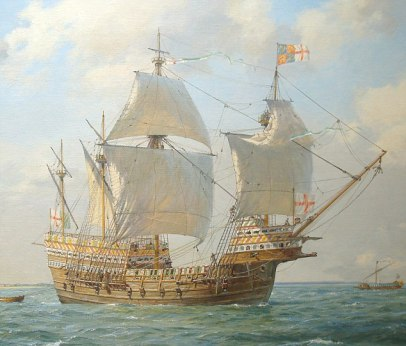
Mary Rose is the only 16th century warship rescued from the sea. As important as its remains (the right part of the helmet) are the more than 20,000 objects found in it. The archaeological investigation that followed its discovery in 1971 allowed us to better understand the naval design and construction of the Tudor England. It was the favorite ship of Henry VIII.
TOP 17:
The Maine
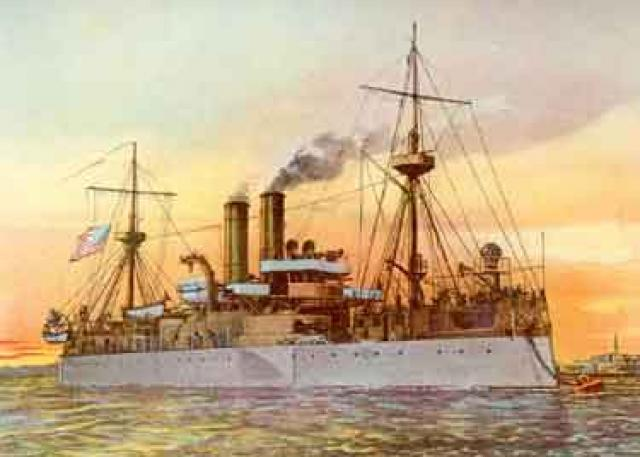
The Maine is known for his catastrophic loss in the Port of Havana on the morning of February 15, 1898. He was sent to protect the interests of US citizens during the Cuban revolt against Spain. Suddenly it exploded, without warning, losing three-fourths of its crew in the explosion. The causes of the explosion were not clear in a commission of inquiry, but American public opinion, fueled by the incendiary proclamations of the American yellow press made by William Randolph Hearst and Joseph Pulitzer, blamed Spain. The phrase "Remember the Maine, to hell with Spain!" ("Remember the Maine, to Hell with Spain!") Became a shout for those who cried out for the war, which materialized in the Spanish-American War that same year. Although the sinking of Maine was not the direct cause of the confrontation, it served as a catalyst, accelerating the development of events. The cause of the sinking of Maine still remains the subject of speculation. Suggestions have included since a fire not detected in a carbonera, recklessly located next to ammunition cloths, a naval mine and its deliberate sinking by some of the interested factions; pro-Spanish Cubans, Spanish sailors, Cuban insurgents or US sailors interested in triggering the war through a false flag operation.
TOP 16:
The ghost ship of Sutton Hoo
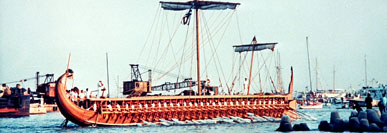
It was discovered by archaeologists in 1939. It is the best preserved example of a ship built in Northern Europe that has been discovered to date. Thanks to the mortuary chamber located above the central area of the ship, invaluable and wonderful historical treasures were preserved, including armor, weapons, gold objects, coins and clothes. Although no body was discovered inside the Sutton Hoo ship, chemical remains indicate that a body was buried, possibly that of King Raedwald or that of King Sigebert, who were rulers of that area in the seventh century. The Sutton Hoo ship is called a “ghost ship” because none of the solid materials with which it was built, lasted over time - the ship was carefully dug up as if it were a fossil, after the wood and the Other organic materials used for its construction would have dissolved in the surrounding sand, and a fossilized mold of the ship would be formed hundreds of years ago. Just as it is the best preserved example of the time, the Sutton Hoo ship is also the largest ship that has been unearthed, measuring more than 27 meters long and 4.5 meters wide. The experts who examined the design of the ship, as well as the objects recovered on it, place it between 625 and 637 AD.
TOP 15:
Mayflower
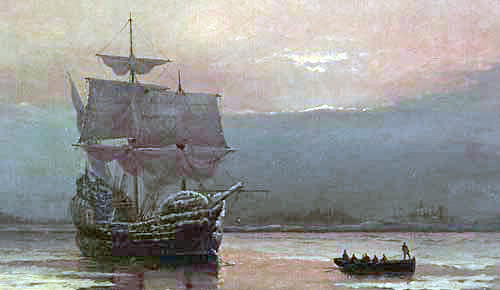
Mayflower (in Spanish translated as Flor de Mayo), is the name of the ship that, in 1620, transported the so-called Pilgrims from England, in the United Kingdom, to a point on the east coast of North America, today located in the United States of America. Due to a series of problems on the ship, they were forced to return twice to repair it, shortly after they set sail. On a third attempt, they finally left Plymouth on September 6 and arrived on November 11. The ship transported 102 people, not counting the crew. They were the first settlers to settle on the coast of Massachusetts, forming the Plymouth colony.
TOP 14:
Friendship
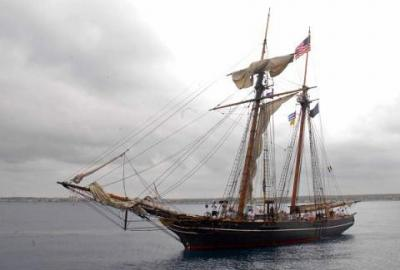
La Amistad was a schooner of Spanish merchant sail in which a slave rebellion took place in 1839, when the ship was traveling off the coast of Cuba.
TOP 13:
The bounty
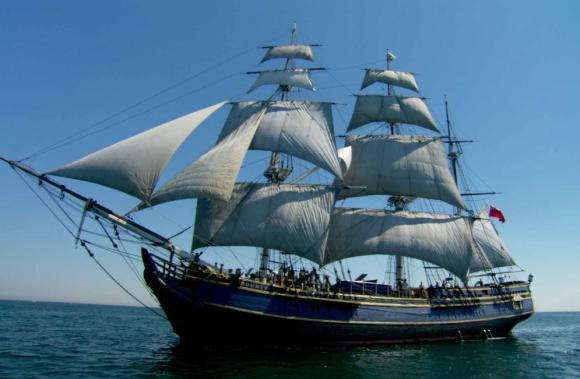
The Bounty was a British navy ship in which a famous mutiny took place in 1789. I just burned down in 1790 so there was no evidence of the rebellion. In 1960 a replica was built that has made it the most famous ship in the cinema having been used in a hundred films including Rebellion on board or Pirates of the Caribbean
TOP 12:
USS Missouri
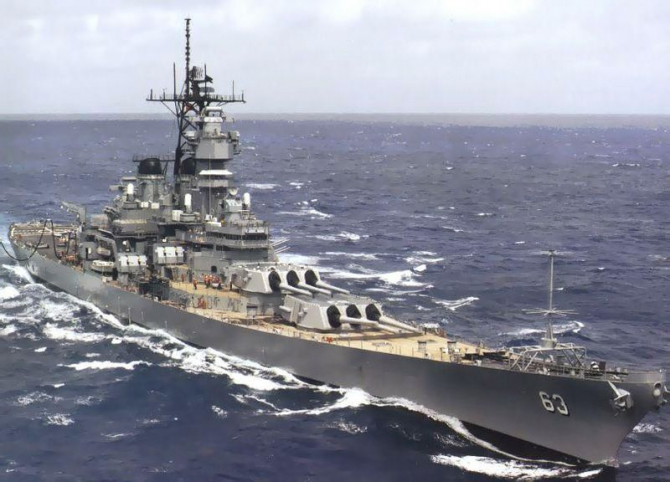
It is an Iowa class battleship of the United States Navy and was the fourth ship named in honor of the US state of Missouri. It was the last battleship built by the United States and the ship in which the surrender of the Empire of Japan was signed that ended World War II. The Missouri was commissioned in 1940 and assigned in June 1944. In the Pacific theater in World War II he fought in the battles of Iwo Jima and Okinawa and bombed the Japanese archipelago. He also intervened in the Korean War between 1950 and 1953, before being discharged in 1955 from the US Navy and placed in the reserve (the "Storage Fleet"). It was reactivated and modernized in 1984 as part of the US Navy's 600-ship plan, and provided support during Operation Desert Storm between January and February 1991. The Missouri received a total of 11 Combat Stars for its service in the Second World War, the Korean War and the Persian Gulf, and was finally taken out of commission on March 31, 1992, although it remained in the US Navy ship registry until January 1995. In 1998 it was donated to the USS Missouri Memorial Association and became a museum ship in Pearl Harbor, Hawaii.
TOP 11:
USS Nautilus
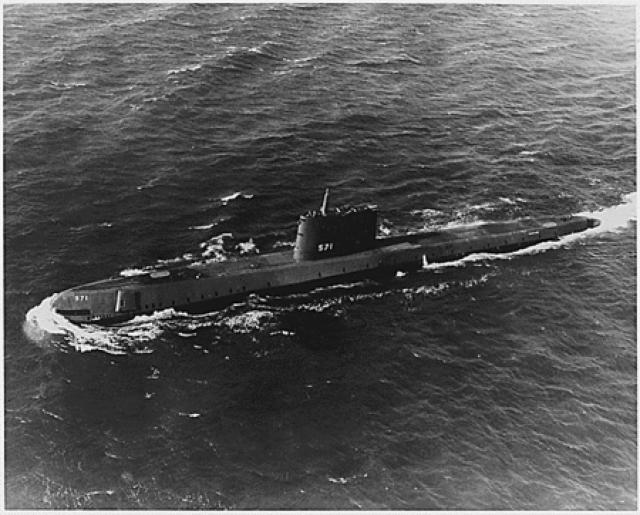
The 'USS Nautilus (SSN-571) is a nuclear attack submarine of the US Navy. It is the third submarine of the US Navy baptized with that name. It was the first submarine in history equipped with atomic propulsion and the first ship that submerged the North Pole.
TOP 10:
Queen Anne's Revenge
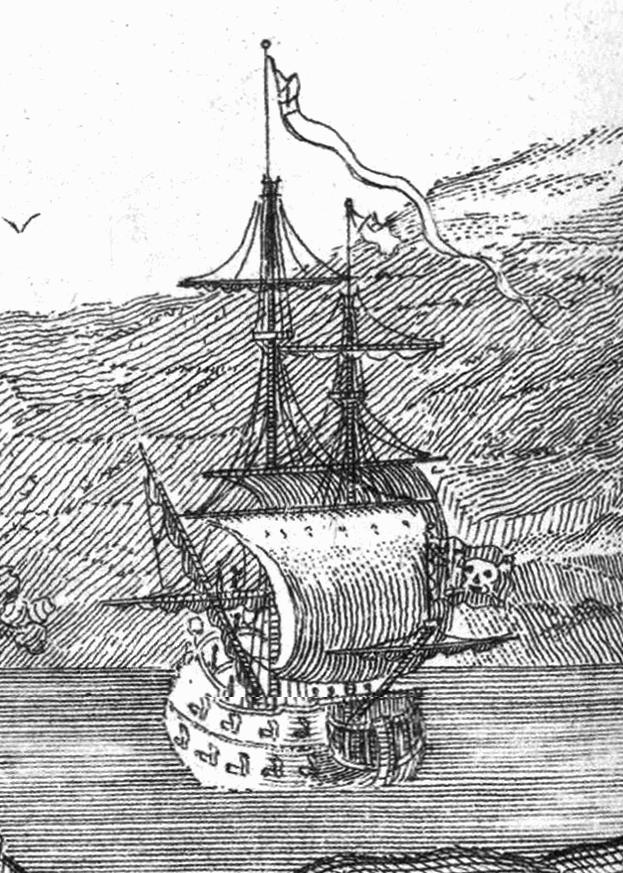
"Queen Anne's Revenge was a ship with which Blackbeard sailed the west coast of Africa and the Caribbean, and attacked ships of various nationalities, especially English, Dutch and Portuguese ships. In addition, it is said that he was haunted and he obeyed his captain
TOP 9:
The Enterprise
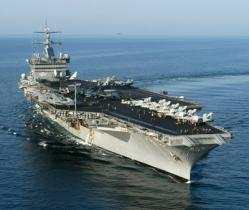
The USS Enterprise (CVN-65), formerly CVA (N) -65, is an aircraft carrier of the United States Navy. It is the eighth ship of the US Navy with that name. It was the first nuclear aircraft carrier in the world and is currently the largest warship that exists, with 342 m, and the eleventh largest displacement after the ten ships of the Nimitz Class. It is the second oldest ship active in the United States Navy after the frigate with a wooden hull and three USS Constitution masts, and its low, initially planned for 2014, will be ahead of 2013 due to the large consumption of its 8 nuclear reactors .
TOP 8:
Queen mary
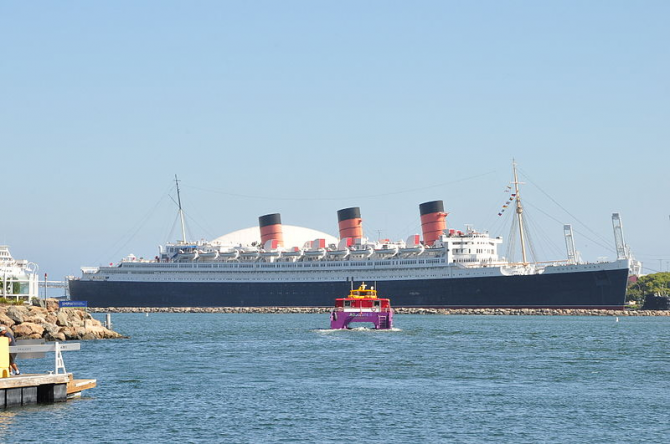
It was at the time the largest transatlantic built and until 1948 it was the fastest, being only surpassed by the SS United States. Built by John Brown and Company in Clydebank, Scotland, it was designed to be the first of two ocean liners that Cunard Line had planned for the express service on the Southampton - Cherbourg - New York route, in response to the great European ocean liners of the decade from 1920 and early 1930. The Queen Mary with her brother Queen Elizabeth were used to transport troops during World War II. Their high speeds allowed them to escape from German submarines. Hitler came to offer a reward for the sinking of the Queen Mary. Queen Mary is on the list of the National Register of Historic Places. It currently functions as a museum, hotel and restaurant in Long Beach, California. It was the flagship of Cunard from 1936 until 1945 when it was replaced by the Queen Elizabeth.
TOP 7:
Battleship Yamato
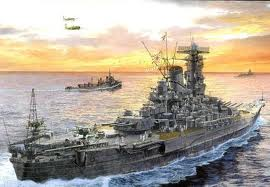
He was a battleship of the Imperial Japanese Navy during World War II. He was a leader of the Yamato class and along with his twin ship, the Musashi, was the heaviest and most heavily armed battleship ever built thanks to its displacement of 72,800 tons at full load and its nine 460mm cannons. However, he did not survive the world war.
TOP 6:
Nao Victoria (Magellan)
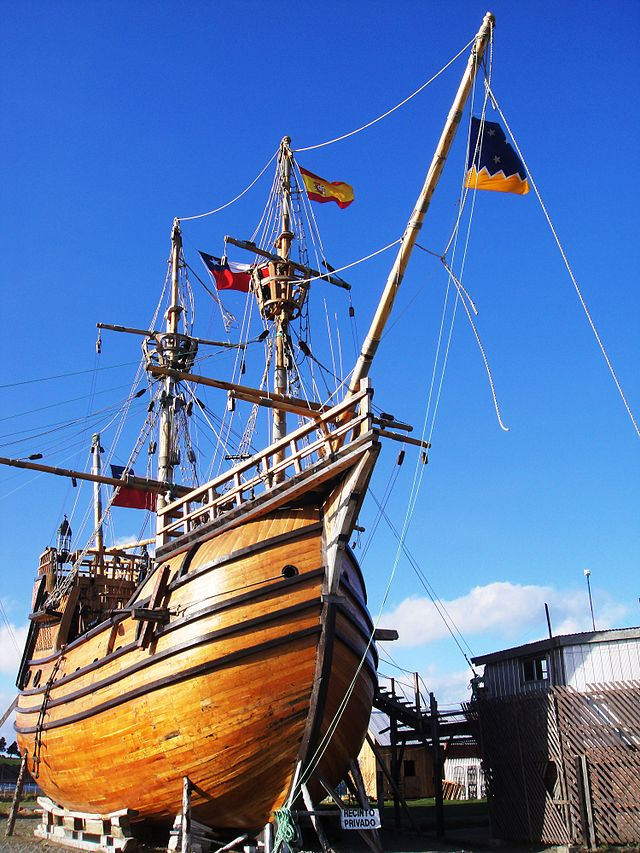
Nao Victoria, was a ship of high board (high or oceanic edge) of the first squadron that the Hispanic Monarchy provided to go to the Islands of the spices, whenever they were included within the Spanish demarcations and without touching in the Portuguese. He was called in his day the "Navy of Specimens" or "Navy of Magellan." The voyages were concluded with the first round the world (1519-1522) being this the only ship that completed this journey.
TOP 5:
Juan Sebastián Elcano School Ship
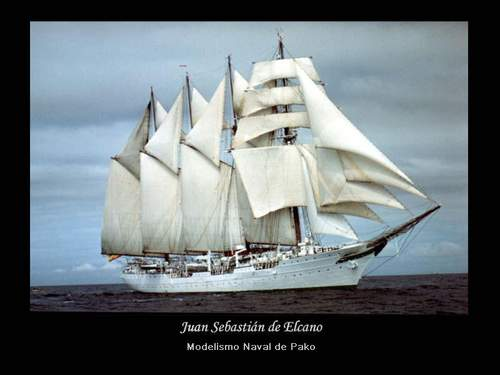
On February 29, 1928 he made his inagural journey between Cádiz and Málaga, carrying an exceptional passenger, King Alfonso XIII. From there he left for Seville where the Universal Exhibition was held, arousing the admiration of its many visitors. His first transoceanic trip was around the world in the opposite direction to the Magallanes-Elcano route. Since then he has made another nine, as well as seventy-two instructional cruises, traveling more than one and a half million nautical miles across all the seas of the planet. It has formed generations and generations of navy officers of the Navy, sailing with the wind and helped by the sextant and the compass.
TOP 4:
The Bismarck
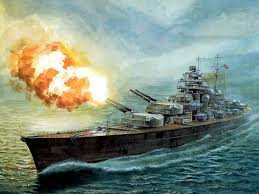
The German battleship pride of the German navy and a ship, once described by Winston Churchill as "a masterpiece of shipbuilding," began its journey in its first combat, on May 24, shattered the Hood battle cruiser and forced the Prince of Wales battleship to flee. Two days later, when the German ship was about to reach safe waters, an ancient Swordfish biplane hit him with a torpedo in the stern, leaving him without rudders. Unable to navigate, the ship waited helplessly for the arrival of its executioners, King George V and Rodney, who reached him on the 27th, opening fire at 9 in the morning. At first the Bismarck returned blow by blow, but at 9:30 their guns were muted in the rain of enemy projectiles. Commander Lindemann ordered to open the flood taps and leave the ship, which went down at 10'39, without lowering the flag. At the bottom of the Atlantic, the battleship became the tomb of 2,200 men, until in 1989 the oceanographer Robert Ballard found his wreck at 4,700 m deep.
TOP 3:
Holy Trinity
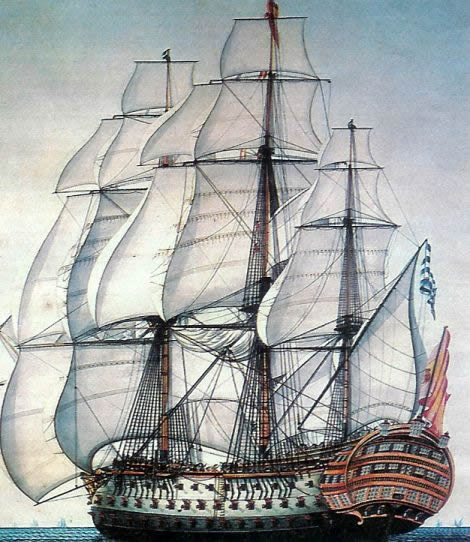
It was a Spanish ship of 120 guns at first, extended to 140 later, the largest of its time, received the nickname "The Escorial of the Seas" and was one of the few ships of four bridges that existed.
TOP 2:
Santa Maria
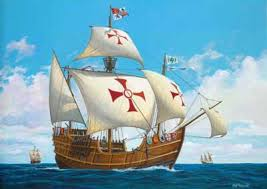
Christopher Columbus sailed aboard the Santa Maria at the end of the 15th century, looking for a direct route to the Indies. Santa María was, in fact, the flagship of a fleet of three ships that also included Pinta and La Niña. The three vessels sailed from the Spanish port of Palos on August 3, 1492. The Santa María was the largest (and slowest) of the fleet, and most experts agree that its length probably exceeded 30 meters . It was a “nao” boat, also known as “carraca”, which means that it could have had three or four masts, a high stern and a depth of at least three meters. After stocking up supplies in the Canary Islands, the Santa María and its accompanying vessels embarked on a five-week sea voyage, without seeing the land. The crew overflowed with joy when they finally saw land - the Bahamas - on October 12, 1492. The Santa Maria, Pinta and La Niña spent more than two months exploring the area's islands, until the flagship ran aground in Haiti and went dismantled, to build a fort that could protect the first Spanish settlement of the island. There are currently several replicas of the Santa Maria around the world, including that of Ohio, USA, which has been open to the public since 1992.
TOP 1:
Titanic
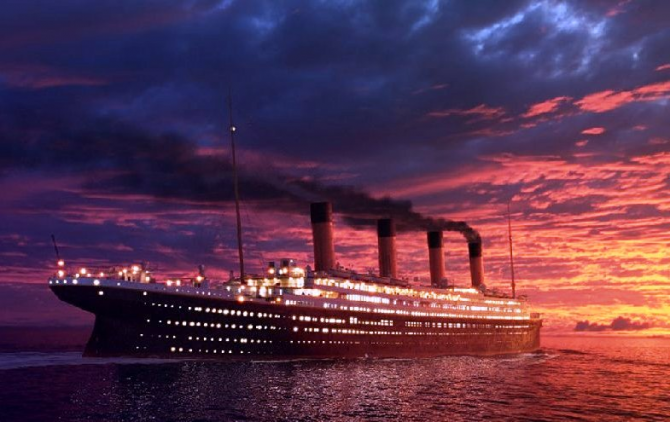
It was a British ocean liner, the largest ship in the world at the time of its launch, which sank in the early hours of April 14 to 15, 1912 during its maiden voyage from Southampton to New York. In the sinking of the Titanic 1514 people died of the 2223 who were on board, which makes this tragedy one of the greatest shipwrecks in history that occurred in peacetime. Built between 1909 and 1912 at the Harland and Wolff shipyard in Belfast, the Titanic was the second of the three ocean liners that formed the Olympic class, owned by the White Star Line shipping company.

